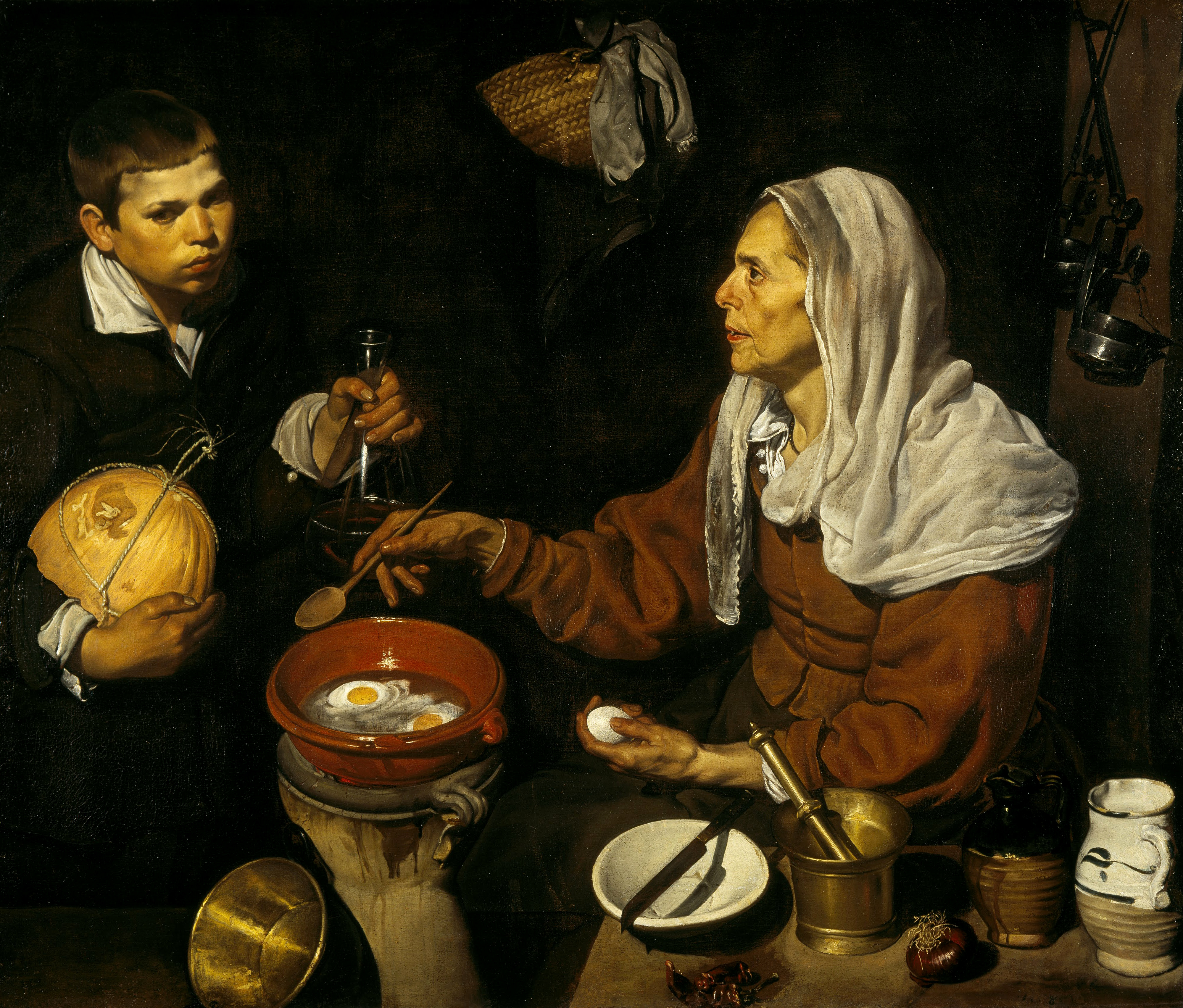
There is no hidden meaning or symbolism in this painting; it is all about a young Velázquez – he was just 19 years old when he painted this- exploring painting and its techniques.
The first thing to notice is the use of chiaroscuro (made famous by Caravaggio); a strong light coming from the left highlighting faces and other objects while putting large areas in dark areas (we only know there is a wall in the background because of the visible basket. This light in combination with the various objects offers Velázquez a chance to show his mastery of painting both shadows (look at the boy’s face) and reflections on various materials (ranging from the shiny glass and metals to the dull melon and the old woman’s cloth.
The second thing to notice is the composition; the way Velázquez carefully arranged all objects to get a visually pleasing result. Not only are the melon the boy is holding, the cooking pot with the eggs and the bowl with the knife lined up, but so are the utensils on the table. If you look carefully, you can discover more of these lines.
The third thing to notice is the subject of the painting; people working in a kitchen surrounded by various cooking utensils. The Spanish word to describe this genre of painting is Bodegón, and due to its subject, it was held in low esteem by art critics. As Vincente Carducho described it in his 1633 Dialogos de la Pintura:
“workmen of scant knowledge or reflection, who debase the noble art to vulgar notions, as we see today, in so many pictures of Bodegones with base and villainous concepts…” (art critics haven’t changed much over the years).
Fransico Pacheco who was both Velázquez’s teacher and father in law replied to this with
“Bodegones not to be esteemed? Of course they are, if painted as my son-in-law paints them, elevating them beyond all comparison, and they deserve very high praise indeed; for in these beginnings and the portraits…he found the true imitation of nature.”
And given the career of Velázquez, it is hard to argue with that.